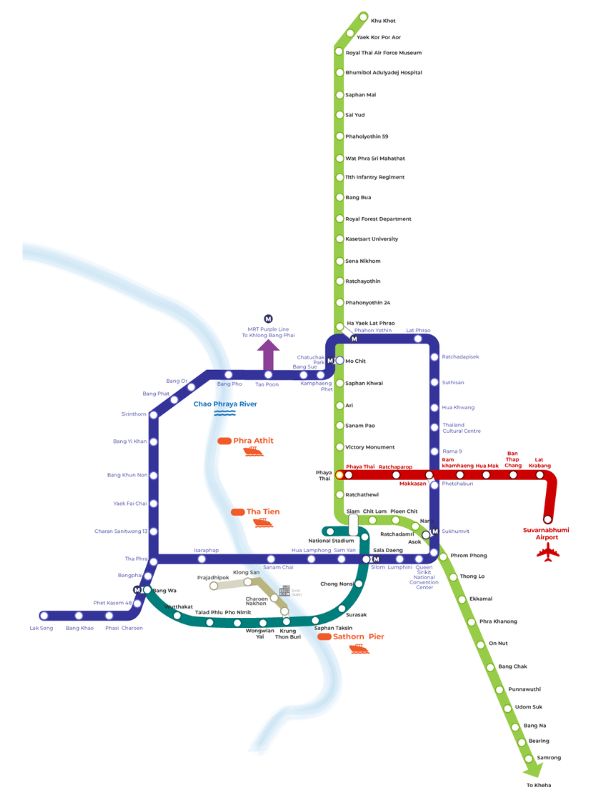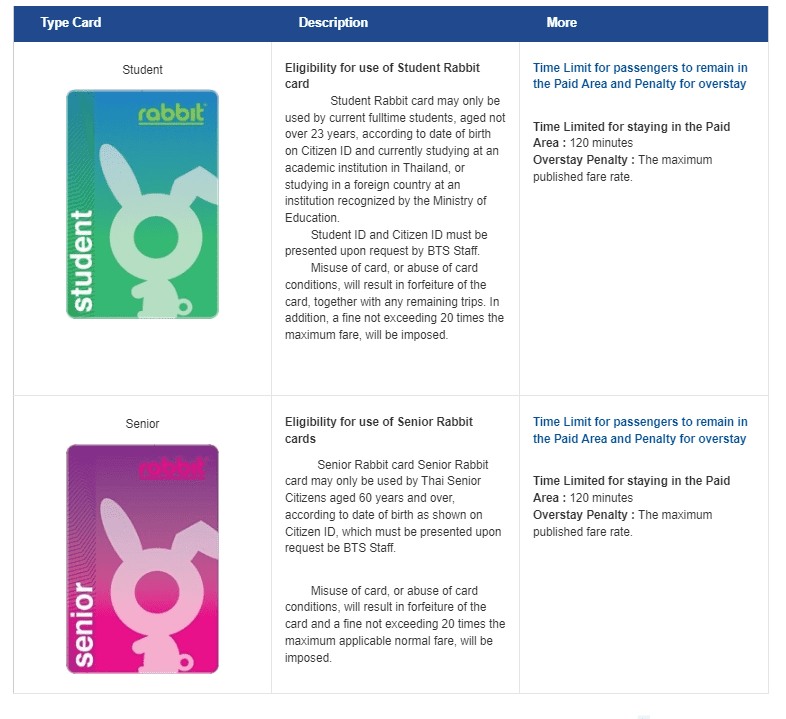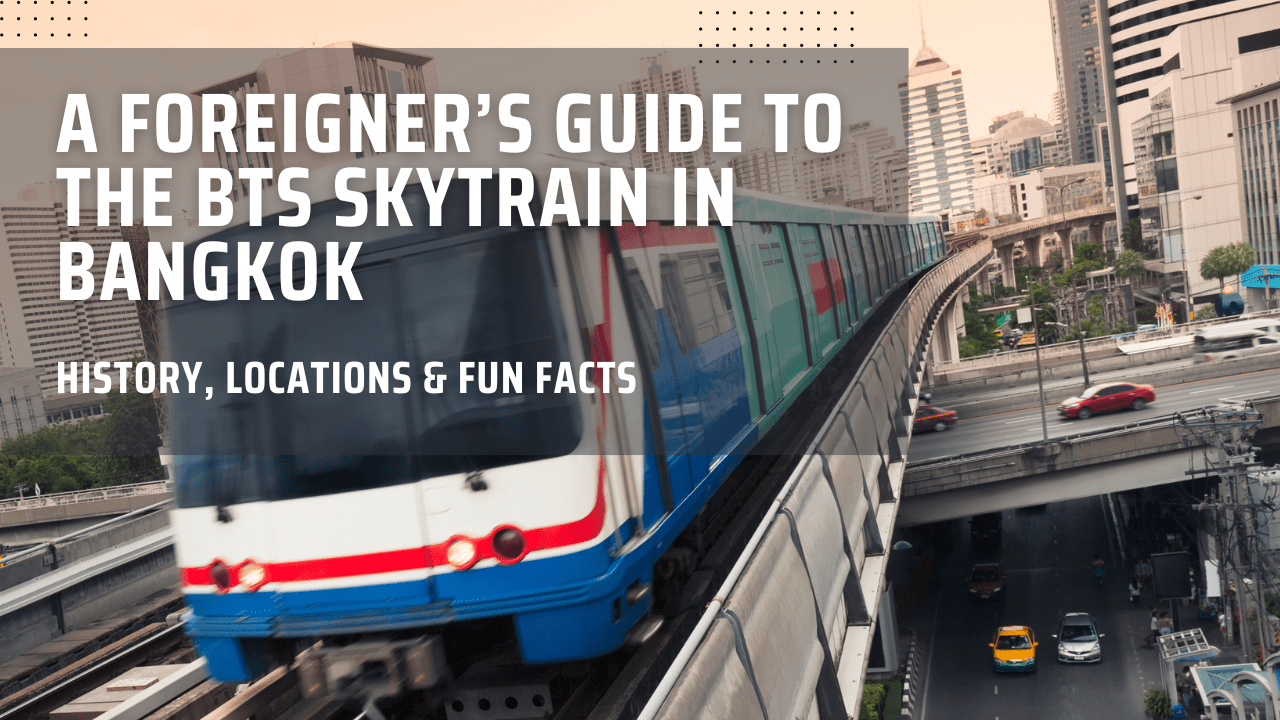Bangkok is full of adventure and travellers or newly moved-in expatriates to the city will want to have the latest information about the BTS Skytrain and MRT.
Being prepared with travel information and the right route to get around Bangkok will save you a lot of stress and confusion. In this article, we give you an overview of the BTS Skytrain, its History, attractions you can see using the Skytrain and useful links and contact for the BTS Skytrain in Bangkok.
Table of Contents
What is the BTS Skytrain in Bangkok?
If you are going to take the Bangkok Skytrain (known as the BTS) or the Bangkok Subway (known as the MRT) it is important to know a little information about them. Who knows, maybe you could also help someone out that’s lost in Bangkok.
These two modes of transport are the two most convenient ways to travel around Bangkok and are one of the fastest modes of transport in Bangkok.
The other fast mode of transport is the Bangkok BRT (Bus Rapid Transport) but the BTS Sky Trains cover the entire of Bangkok through stations also known as terminals via 2 map routes. Both lines connect at Siam station while the MRT subway can be easily accessed from the Asok station.
For locals and visitors, the BTS Skytrain is one of the most essential modes of transport in Bangkok. The BTS Skytrain is used heavily by both Thai citizens and foreigners who wish to travel on this beautiful mode of transport with scenic views and at great speeds.

Routes of the BTS SkyTrain
The initial core network of the BTS Skytrain line began in 1999 and in 2009, the BTS Sky Train Limited Company began the operation of the Silom Line extension. In the year 2009, the limited corporation began operations on the Sukhumvit line extension.
The Silom line has a total of 13 stations starting at the National Stadium and ending at Bang Wa, while the Sukhumvit line has a total of 22 stations starting at Chatuchak Park and ending at Bearing which is after the second last station Bang Na. Both the Silom and Sukhumvit lines have Siam as a common point to change between lines and at Asok station, it is also possible to move to MRT Underground or BRT lines.
The Bangkok Skytrain and MRT Map Bangkok

Make Sure You Book a Bangkok Hotel Near The Skytrain or MRT
To maximize convenience during your stay, it’s advisable to choose a hotel that is situated near a Skytrain station. This way, you can easily navigate the city without having to endure long walks in the heat on Bangkok’s bustling and sometimes challenging sidewalks. By selecting a hotel within proximity to a Skytrain station, you can ensure a more comfortable and efficient exploration of the vibrant city.
When searching for accommodation in Bangkok, it’s important to consider the hotel’s location on the map. Websites like Booking.com and Agoda.com provide a map on each hotel’s page, allowing you to assess its proximity to nearby attractions.
Attractions Around the BTS SkyTrain
Discover a multitude of Bangkok attractions conveniently connected to the BTS Skytrain network. Here are the top attractions accessible via various BTS stations:
- Saphan Taksin Station:
- Siam Station:
- Siam Discovery, Siam Centre, and Siam Paragon
- Chit Lom Station:
- Central World shopping mall
- Mo Chit Station:
- National Stadium Station:
- MBK Centre
- Phrom Phong Station:
- Emquartier
- Asoke Station:
- Terminal 21 and Siam Niramit
- Victory Monument Station:
Buying Tickets For The Skytrain & How To Skip The Long Train Queues
Make your BTS Skytrain journey hassle-free by purchasing a BTS prepaid card in advance. By doing so, you can bypass the queues and save valuable time at the station. The convenient prepaid card, known as the BTS Skytrain Rabbit card, can be easily

How Changing Between BTS and MRT Works
Effortlessly transition between the BTS and MRT systems by utilizing the convenient intersection stations. At these stations, you can seamlessly transfer from one network to the other with ease. The intersection stations include:
- Asoke BTS / Sukhumvit MRT
- Sala Daeng BTS / Silom MRT
- Mo Chit BTS / Chatuchak MRT
- Ha Yaek Lat Phrao BTS / Phahon Yothin MRT
Simply exit one station and walk directly into the other to continue your journey. These well-connected intersection points provide a smooth transition, allowing you to explore different parts of Bangkok conveniently and efficiently.
Say goodbye to complicated transfers and enjoy a seamless travel experience between the BTS and MRT networks.
Here Are 5 Quick Fun Facts/ Advice for Riding the BTS Skytrain
- Always carry a jacket while riding the BTS Sky Train as the temperature on the train is 10 degrees cooler than outside, and on a chilly day, this can be a bit too cold to handle!
- The BTS has a fleet of 52 trains, with each train running on a four-car system. The trains operate from 6.00 am every day until midnight. Tickets can be bought in multiple ways, such as through machines at the station outside gates through coins. The tickets are valid only for the ride within the BTS system and change can be gotten for notes at the designated service desks.
- BTS Sky trains also offer transfer bus services between major airports, specifically the Suvarnabhumi and Don Muang Airports. Between 5 am and midnight every day, one bus departs at a 1-hour interval from Sukhumvit airport at Gate 3 near the arrival hall. The departure at Don Muang is again outside the arrival hall. While these buses are free to travel in and do not need a pass, a valid flight ticket is needed to board these buses.
- There are two ways to travel on the BTS Sky Train, the first is to buy a ticket per journey which starts at 15 baht and goes up to 52 baht. The second is to buy a daily pass at 130 baht which is valid for unlimited journeys for 1 day. The time duration for the 1-day pass starts at 6 am and ends at midnight for that day. Passes can be bought at stations through the Kiosk for tickets.
- While travelling on BTS Sky Trains there are three things that one should never do. These include eating Durian fruit, which is considered a pungent-smelling fruit and can cause you to pay a hefty fine, eating chewing gum which is frowned upon while travelling and getting into the train before allowing people to get out of the train first. Also, a good rule to follow is to always stand on the right side of the escalator, but walk on the left side of the escalator always.
It should be noted that it is a good idea not to smoke in and around the BTS network and finally watch out for the slamming gates that use automated ticket systems to open and shut. The automated gates tend to close pretty quickly so walking briskly is always a good move.
History of The BTS SkyTrain
In the year 1968, the BTS Sky Train was established as a limited company under the name Tanayong Company Limited. In the year 1991, this company was listed on the Stock Exchange of Thailand, and in the year 1991, this limited company moved its business emphasis to Bangkok RMT under the Bangkok Transit System Corporation Ltd.
At this time, they signed a concession contract to design, build and operate the largest and also the first Mass Transit system. This came to be known as the core Skytrain network that moved on in the year 2020 to enter into a contract known as a PPA. This contract was in essence made to build a U-Tapao international airport, which is Bangkok’s third airport.
In December 1999 the BTS SkyTrain was inaugurated by Princess Maha Chakri Sirindhorn. For the first 5 years of the Skytrain being operational on the initial lines, Thai citizens were very wary of riding on this mode of transport but once they realized the ease, convenience, and speed of this scenic mode of transport, the train caught popularity very soon.
The volume of people that travel on the BTS line has increased from 140,957,969 passengers in 2009 to a whopping 247,000,000 passengers in 2019. The peak hours of the BTS Skytrain network are between 7-9 am and also between 5-7 pm every day, it is best to plan to reach your chosen destination on time and not tired due to the transit.
The Impact of The Bangkok BTS SkyTrain On the Thai Economy
Bangkok is known for being a city of traffic and jams, however, this has changed since the BTS Skytrain became a preferred mode of commute. Moreover, the BTS Transport system has greatly lowered the time taken to commute, enhanced connectivity, and also impacted the economy positively in many ways. The network has given Thailand leverage in the ASEAN due to ease of commute through seamless connectivity for traders and commuters alike. This has directly impacted the real estate market as well making the city a must-live in place and also an investor’s paradise.
While Bangkok is not nearly as expensive to live in compared to other southeast countries like Hong Kong, this city has both an old-world charm and a modern vibe to it! This perfect harmony of the best of both worlds has seen an influx of foreign buyers living and investing in the Thai real estate market. Read more about the average cost of living in Thailand on the informative Silk Estate Blog.
If you are considering buying a condo, villa, or townhouse in Thailand it is important to remember that not all property types are for sale to foreigners, and having a realtor to guide you is the simplest way to get your dream Thai property registered in your name. There are many ways a foreigner can own a property in Thailand, so make sure to get in touch with us to find out the best way for you.
Useful Contact Information For The BTS Skytrain.
Here is the essential contact information for the BTS Skytrain in Bangkok. Whether you have inquiries, require assistance, or simply want to stay informed about the latest updates, having access to the right contact details is crucial. From the customer service center to the operation control center, we’ve got you covered. By the end of this section, you’ll have all the necessary contact information to ensure a seamless and convenient experience while navigating the bustling city using the BTS Skytrain.
BTS Skytrain Customer Service Center: Phone: 0-2617-6000 (daily from 6:00 AM to midnight)
Email: bts-consumer@bts.co.th
Website: https://www.bts.co.th/en
BTS Skytrain Operation Control Center:
Phone: 0-2617-7300 (24 hours)
If you have any inquiries or need assistance regarding the BTS Skytrain in Bangkok, you can contact their customer service center or the operation control center using the provided contact information.
You may be interested in this post >>>The Best Areas to Live in Bangkok For Foreigners
You may be interested in this post >>> Things To Keep In Mind While You Buy A Condo in Bangkok.




